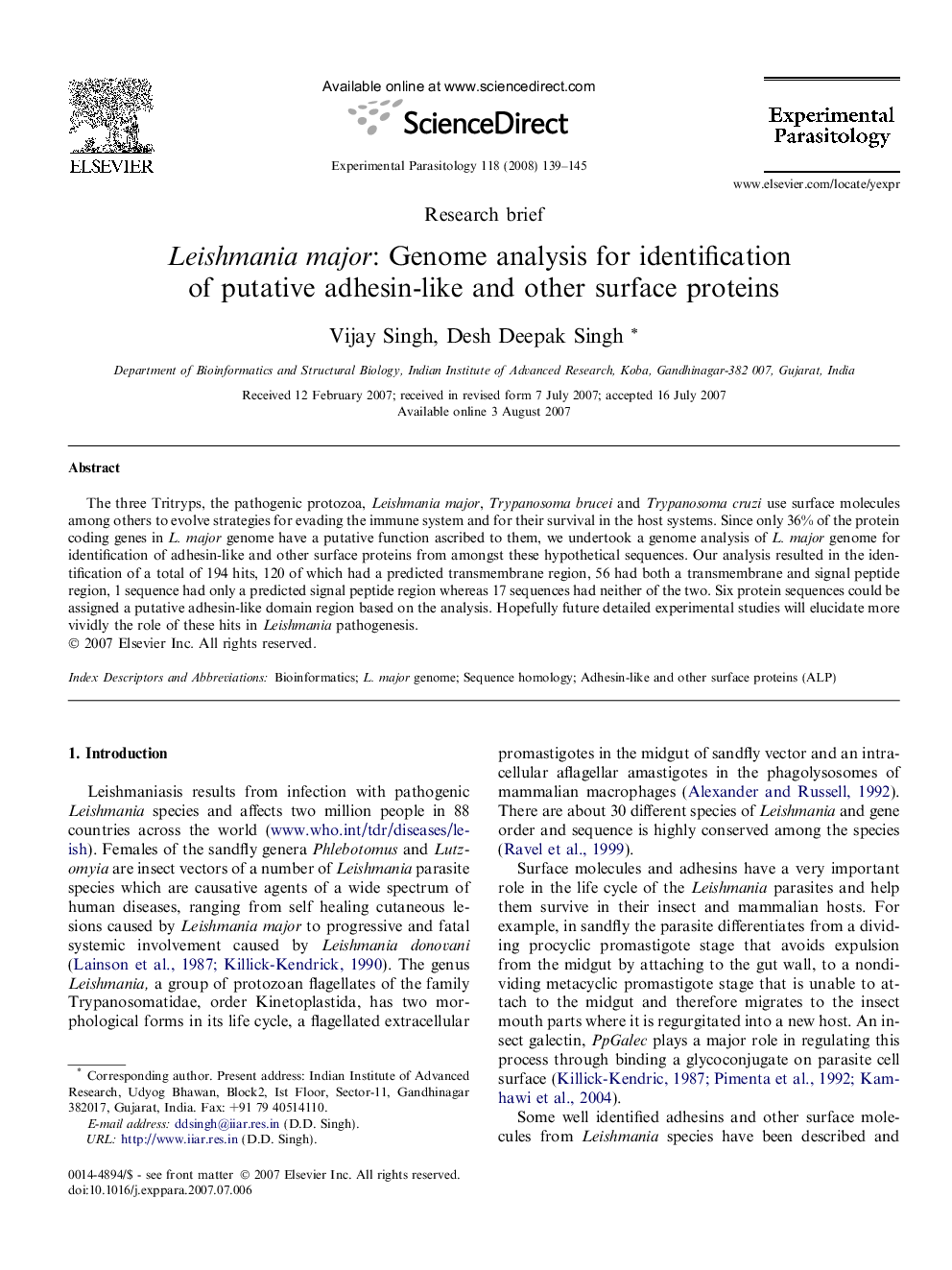| Article ID | Journal | Published Year | Pages | File Type |
|---|---|---|---|---|
| 4371566 | Experimental Parasitology | 2008 | 7 Pages |
The three Tritryps, the pathogenic protozoa, Leishmania major, Trypanosoma brucei and Trypanosoma cruzi use surface molecules among others to evolve strategies for evading the immune system and for their survival in the host systems. Since only 36% of the protein coding genes in L. major genome have a putative function ascribed to them, we undertook a genome analysis of L. major genome for identification of adhesin-like and other surface proteins from amongst these hypothetical sequences. Our analysis resulted in the identification of a total of 194 hits, 120 of which had a predicted transmembrane region, 56 had both a transmembrane and signal peptide region, 1 sequence had only a predicted signal peptide region whereas 17 sequences had neither of the two. Six protein sequences could be assigned a putative adhesin-like domain region based on the analysis. Hopefully future detailed experimental studies will elucidate more vividly the role of these hits in Leishmania pathogenesis.
